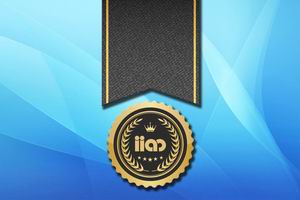Accreditation of Mediators and Arbitrators

Internationally and nationally trained Mediators are empanelled as Mediators in the IIAM website and Peacegate App.
As per the IIAM Mediator Accreditation System, Mediators are graded under different categories. IIAM Accreditation is given as per the grades and upgradation based on the IIAM Qualifying Assessment Programs (QAP).
As per the IIAM QAP, a Community Mediator, after completing 15 hours of mediation is eligible to be accredited as a Certified Community Mediator. As per the IIAM Mediator Accreditation System, a Mediator who has undergone an IIAM approved mediator training program will be qualified as an IIAM Panel Mediator and based on the IIAM QAP will be graded as IIAM Accredited Mediator. An Accredited Mediator, after completing 30 hours of mediation is eligible to be accredited as a Certified Mediator and after 75 hours as a Senior Certified Mediator.
IIAM Mediators are also eligible to become Mediators with the Asia Pacific Centre for Arbitration & Mediation (APCAM), as per the APCAM Accreditation Rules. As per APCAM Accreditation system, there are three levels of accreditation – APCAM Accredited Mediator (AAM), APCAM Certified Mediator (ACM) and APCAM International Certified Mediator (AICM).
An IIAM Mediator, after 30 hours of experience is eligible to apply as ACM and after 150 hours of experience is eligible to apply as AICM.
IIAM was the first institution in India approved by the International Mediation Institute (IMI) as a “Qualifying Assessment Programme” (QAP) for IMI Certification. Since IIAM commenced APCAM Certification, IMI QAP is discontinued.
IIAM Certified Mediators and above will be eligible to become IIAM Reviewers. A Reviewer will act as a Mentor for junior mediators and will also be responsible for preparing the Feedback Digest of Mediators and for guiding them in any professional or ethical dilemmas. From among the Reviewers, the IIAM Mediator Disciplinary Committee is also formed, which will be responsible for the Mediators’ Conduct Assessment, enquiring into complaints on violation of IIAM Mediators’ Code of Professional Conduct by any Mediator. You can develop your professional career as a Mediator globally, by opting the IIAM QAP.
As per the IIAM Arbitrator Accreditation System, an Arbitrator who has undergone an IIAM approved arbitrator training program will be qualified as an IIAM Panel Arbitrator and based on the IIAM Qualifying Assessment Programs (QAP) will be graded as IIAM Certified Arbitrator. A person who has sufficient expertise and experience in arbitration and having specified subject expertise is recommended by IIAM as an Arbitrator under the Experience Qualification Path (EQP) as per the IIAM QAP.
IIAM Arbitrators are also eligible to become Arbitrators with the Asia Pacific Centre for Arbitration & Mediation (APCAM), as per the APCAM Accreditation Rules.
Arbitrator Accreditation is based on the APCAM Qualifying Assessment Programs (QAP) and under the Experience Qualification Path (EQP). As per APCAM Accreditation System, there are three levels of accreditation – APCAM Accredited Arbitrator (AAA), APCAM Certified Arbitrator (ACA) and APCAM International Certified Arbitrator (AICA). Once accredited, the arbitrator can upload their details in the APCAM website, making them visible for users worldwide.
Mediation Advocates are accredited based on the IIAM Qualifying Assessment Program (QAP). An IIAM Accredited Mediation Advocate is enlisted in the PeaceGate App as IIAM Accredited Mediation Advocate, so that disputing parties can identify the appropriate advocate to advise and represent them in mediations.
All IIAM Accreditations and QAP’s shall be accessible on equal basis to all mediators, arbitrators and mediation advocates regardless of their professional affiliations, gender, race, ethnicity, age, religion, sexual orientation or other personal characterization. The accreditation will be purely based on evaluation under the respective QAP’s.
